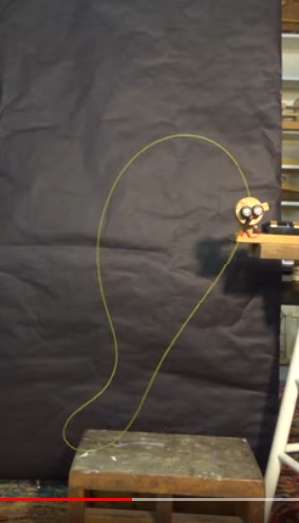I'd say the overriding reason behind loop morph is fly-leg momentum pulling the rod-leg taut
and
I thought what I meant was so obvious that I didn't need to explain it further.
James,
You know that momentum is not a force, but many readers of this forum do. Same thing goes for inertia.
Thus that statement probably made perfect sense to them, but it not so obvious what you meant to someone who is familiar with Newton's formulation of his second law. I.e. F=dp/dt not the F=ma version that is generally given in high school physics.
So if it not momentum that is pulling the rod leg up what do you think are the overriding reasons for loop morph?
I honestly don't know what produces a Dolphin Nose loop and yet that shape shows up in a variety of loops such as the chain fountain.
Here is an example of the Duck head loop shape that shows up using a loop of fly line in the string shooter. No one has explained that shape either.

Gordy

